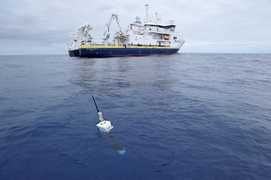The Passive Aquatic listener (PAL) is a passive acoustic underwater recorder used to measure precipitation rates and winds over the ocean. It collects underwater ambient-noise time series and converts it to a multi-frequency (1-50 kHz) spectrum of sound pressure levels (SPLs). These SPLs can be used to determine the intensity of ocean ambient sounds, such as raindrops and surface winds, to estimate rain rate and wind speeds. PAL provides data in a 4.5 s time series at a sampling frequency of 100 kHz. PAL can be deployed on moored buoys and floats.

Instrument Details
- Acoustic
- Earth Science > Oceans > Ocean AcousticsEarth Science > Atmosphere > PrecipitationEarth Science > Atmosphere > Precipitation > Precipitation RateEarth Science > Oceans > Ocean Winds > Surface WindsEarth Science > Oceans > Ocean Winds
- Sea/Ocean/Water Surface, Subsurface - Sea/Ocean/Water
- 100 kHz
- N/A
- 1-50 kHz
- Currently unavailble
Currently unavailable
Currently unavailable
Currently unavailable
Currently unavailable
data center outside NASA
 ARGO Float 4 Campaigns · 2 Instruments | SPURS Salinity Processes in the Upper Ocean Regional Study 2012—2017 Subtropical North Atlantic Ocean, Tropical Eastern Pacific Ocean 2 Deployments · 41 Data Products
|
Filter data products from this instrument by specific campaigns, platforms, or formats.